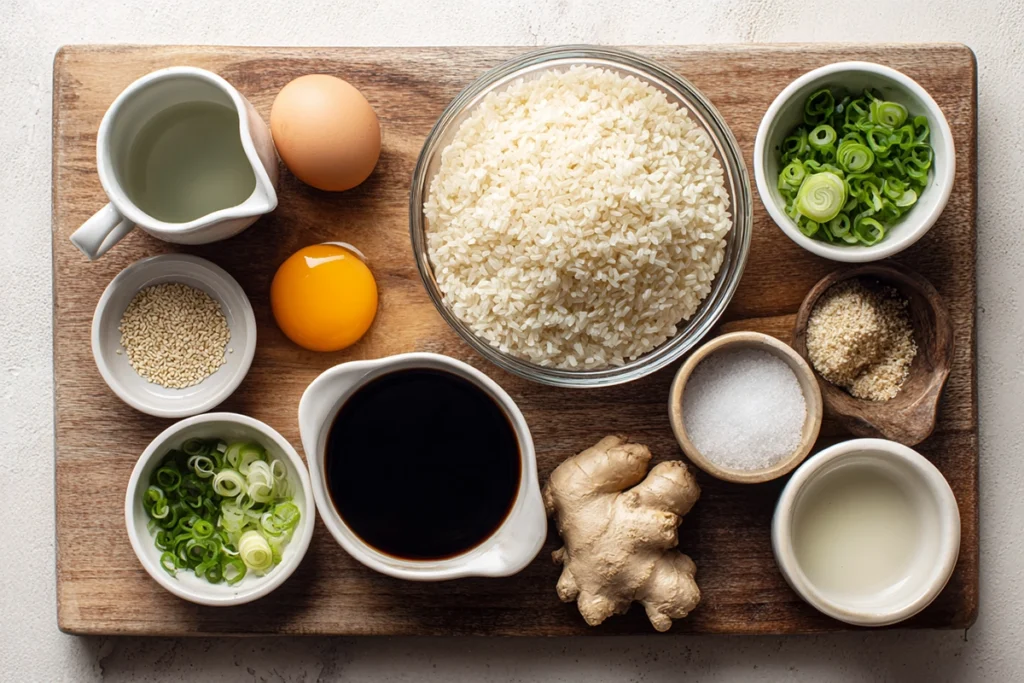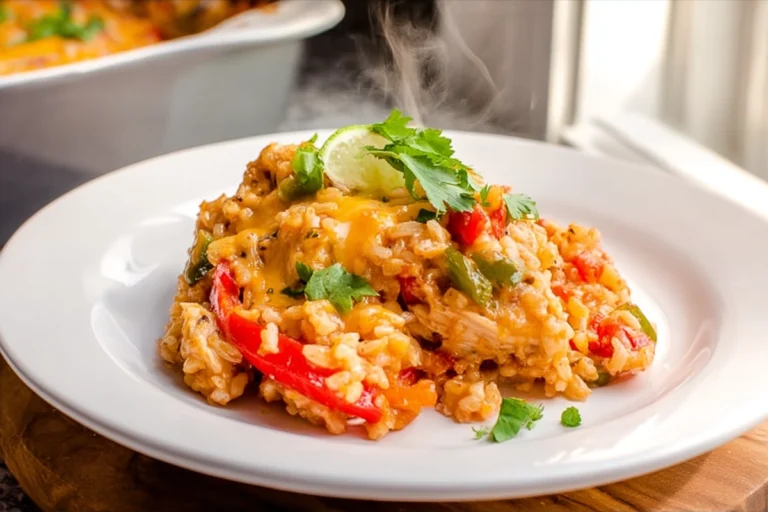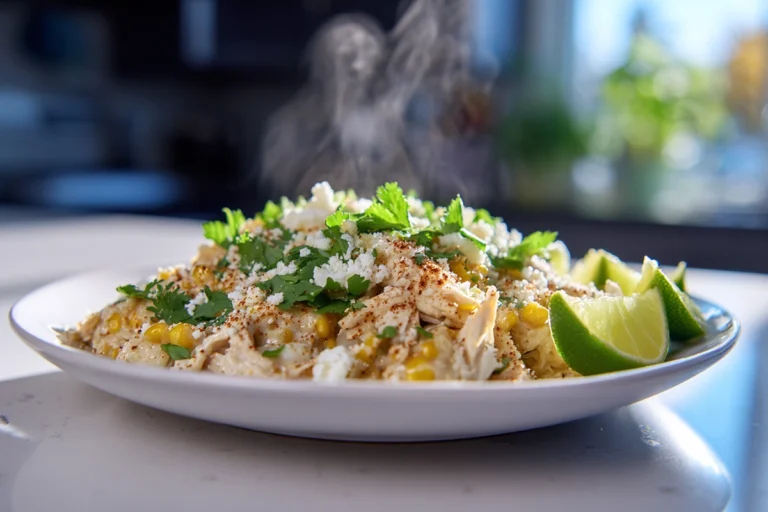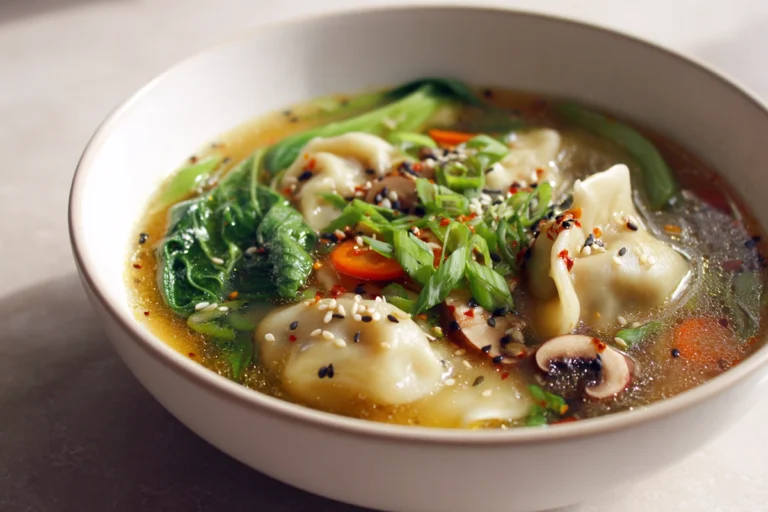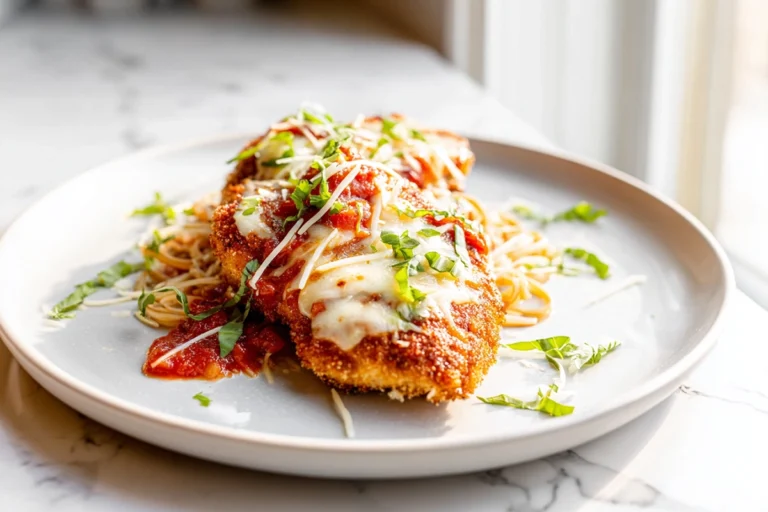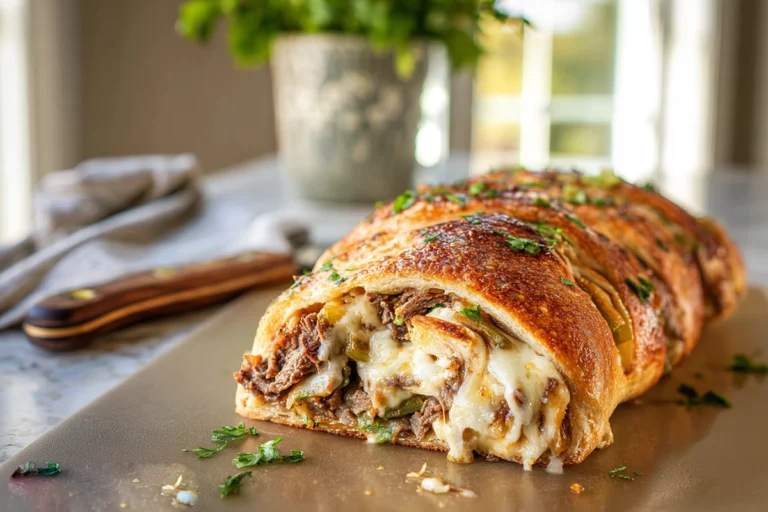Okayu with Egg: The Comforting Japanese Rice Porridge You’ll Love
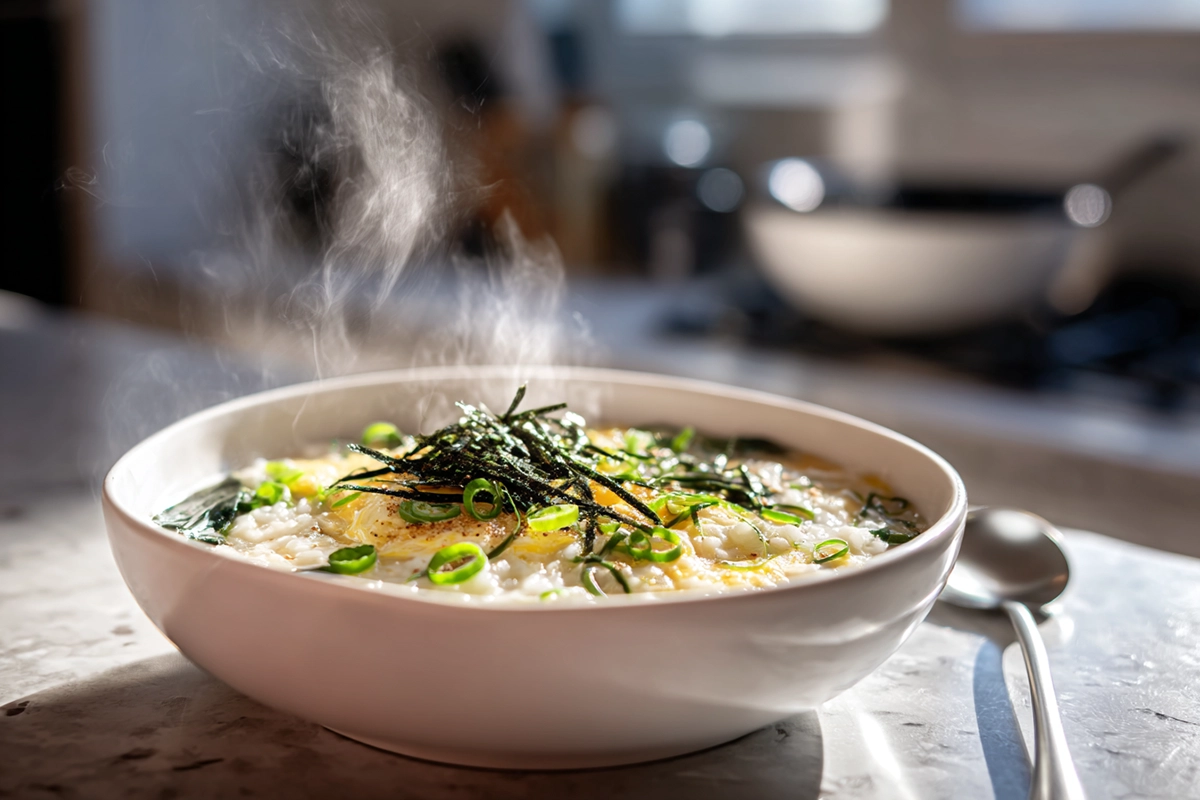
There are certain meals that feel like a soft hug when life gets stressful. For me, Okayu with Egg is one of those. The first time I tasted it in a small Kyoto inn during a cold night, its gentle warmth and silky texture instantly grounded me. If you’re craving something soothing, nourishing, and simple, Okayu with Egg might just become your new go-to.
When you whip up Okayu with Egg at home, you’re crafting more than rice soup—you’re tapping into a centuries-old Japanese tradition of comfort cooking. With just a few ingredients, you can create a bowl that’s perfect when you’re sick, cozy on a quiet evening, or in the mood for something light but satisfying.
What Is Okayu (Japanese Rice Porridge)?
If you’ve never tried okayu, think of it as Japan’s version of rice porridge. Made by slowly simmering rice in plenty of liquid, it softens into a mild, spoonable consistency. What sets it apart is its gentle flavor—often nearly plain—so it’s very digestible.
When you stir an egg into that warm porridge, you elevate it. The egg adds protein, richness, and a silky swirl that feels comforting in every spoonful. Okayu is often eaten in Japan when someone is ill, or when you want a light meal that feels nurturing without being heavy.
Because of its mild nature, okayu is sometimes compared to congee or jook—but it’s usually less seasoned and more restrained. It’s meant to comfort, not overpower.
Print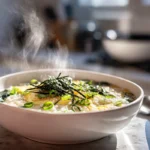
Okayu with Egg
- Total Time: 40 minutes (raw rice method) or 25 minutes (cooked rice method)
- Yield: 4 servings 1x
Description
A comforting Japanese rice porridge made with short-grain rice and egg, simmered until creamy and silky. This soothing dish is light, nourishing, and customizable with simple garnishes or add-ins.
Ingredients
1 cup Japanese short-grain rice (or sushi rice)
5–7 cups water or light broth
1 egg, beaten
½ teaspoon salt
1 tablespoon soy sauce or tamari (optional)
½ teaspoon grated ginger (optional)
1 teaspoon sesame oil (optional)
1 green onion, sliced (optional garnish)
Nori strips, sesame seeds, or furikake (optional garnish)
Instructions
-
Rinse rice under cold water until the water runs clear.
-
Combine rice and 5–7 cups water or broth in a pot and bring to a boil.
-
Lower heat and simmer, stirring occasionally, until rice breaks down and porridge becomes creamy (30–40 minutes for raw rice; 10–15 minutes if using cooked rice).
-
Season with salt and optional soy sauce or ginger.
-
Reduce heat to low. Slowly drizzle in the beaten egg, stirring gently in one direction to form silky ribbons.
-
Let rest for 1–2 minutes.
-
Serve hot, garnished with sliced green onion, sesame oil, or nori strips if desired.
Notes
Adjust rice-to-water ratio for preferred consistency: 1:5 for thick porridge, 1:7 for a thinner, soupier version.
Leftovers thicken as they cool; reheat with a splash of broth or water.
Freezing is not recommended once the egg is added.
- Prep Time: 10 minutes
- Cook Time: 30 minutes (raw rice method) or 15 minutes (cooked rice method)
- Category: Soup / Comfort Food
- Method: Simmering
- Cuisine: Japanese
Nutrition
- Serving Size: 1 bowl (about 1 cup cooked okayu)
- Calories: 180 kcal (approx.)
- Sugar: 1 g
- Sodium: 400 mg (varies with broth and soy sauce)
- Fat: 5 g
- Saturated Fat: 1 g
- Unsaturated Fat: 3 g
- Trans Fat: 0 g
- Carbohydrates: 30 g
- Fiber: 1 g
- Protein: 6 g
- Cholesterol: 55 mg
Ingredients & Key Flavor Elements
Here’s everything you’ll need to make Okayu with Egg, along with optional touches to make it your own:
Ingredients
- 1 cup Japanese short-grain rice (or sushi rice)
- 5 to 7 cups water or light broth
- 1 egg, beaten
- ½ teaspoon salt
Optional flavor boosters & garnishes
- 1 tablespoon soy sauce or gluten-free tamari
- ½ teaspoon grated ginger
- 1 teaspoon sesame oil
- 1 green onion, thinly sliced
- Nori strips, sesame seeds, or furikake
The water (or broth) ratio you choose determines the texture. Closer to 1:5 gives a thicker porridge; 1:7 yields a more fluid, soupy feel. The egg should be added gently near the end so it soft-cooks into delicate ribbons rather than turning into scrambled bits.
Step-by-Step Preparation Method
You’ve got two main approaches for making your rice porridge: from raw rice or from leftover rice. Choose what fits your time and pantry.
Cooking from Raw Rice (Taki-kayu style)
- Rinse the rice until the water runs clear to remove excess starch.
- Combine rice and liquid in a heavy pot.
- Bring to a boil, reduce the heat to low, and simmer, stirring occasionally to prevent sticking.
- Let it cook for 30–40 minutes until the grains soften and break down.
Cooking from Cooked Rice (Ire-kayu style)
- Take leftover cooked rice and add it to simmering broth or water.
- Cook gently for 10–15 minutes, stirring, until the rice breaks down and becomes creamy.
Adding the Egg
Once your porridge is nearly done, reduce the heat to low. Slowly pour in your whisked egg, stirring gently in one direction. You’ll see soft, silky ribbons form as the egg cooks. After that, cover the pot and let it rest a minute for it to settle.
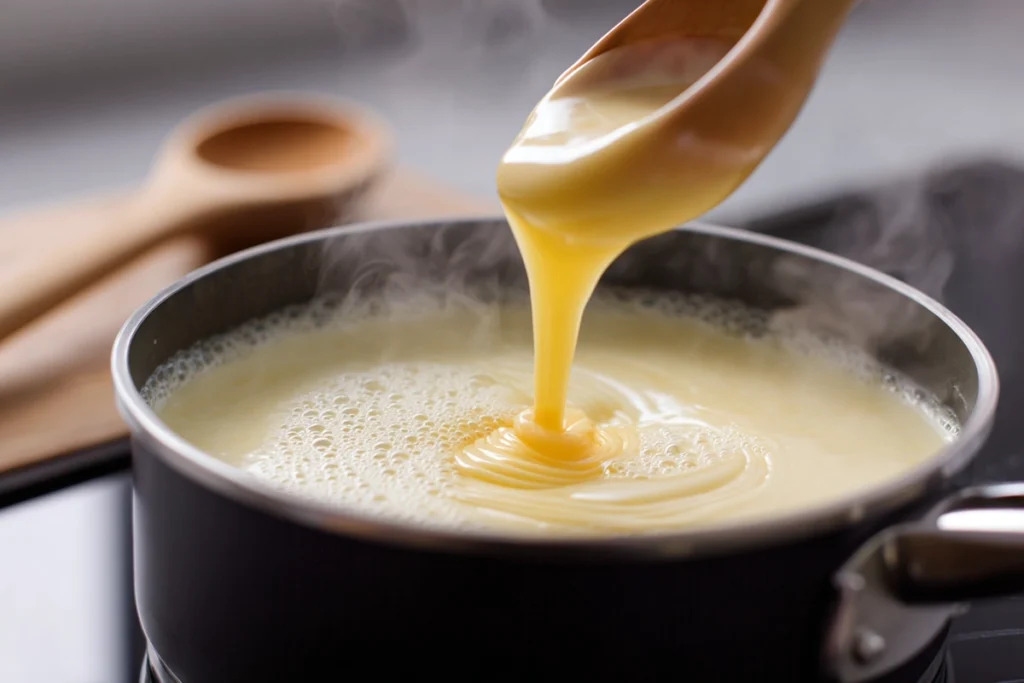
Serving & Garnish Tips
Scoop into bowls while still warm. Top with sliced green onion, a drizzle of soy or sesame oil, sesame seeds, or nori strips. If you want more substance, add tender mushrooms, bits of cooked chicken, or even a dab of miso.
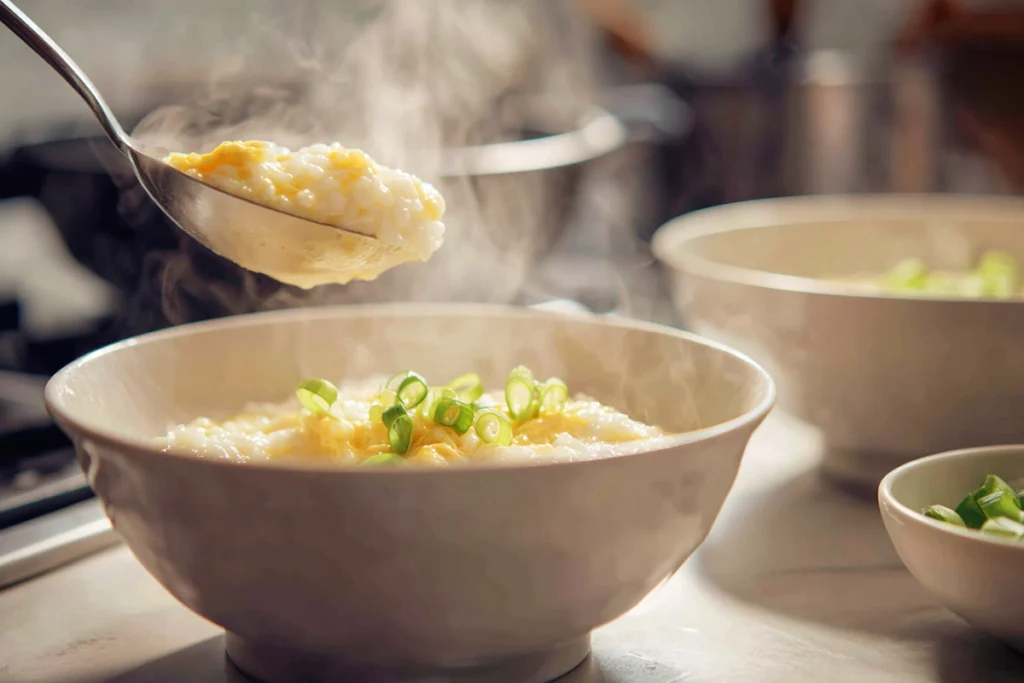
Dietary Variations & Ingredient Substitutions
Because Okayu with Egg is fundamentally simple, adapting it for various diets is straightforward.
Vegan
Skip the egg and replace it with mashed silken tofu or a vegan egg substitute. Use kombu and dried shiitake stock in place of dashi or chicken broth.
Gluten-Free
Use tamari (gluten-free soy sauce) instead of regular soy sauce. Make sure any broth or seasonings are certified gluten-free.
Low-Calorie / Low-Sodium
Use plain water or very light broth. Limit oil, soy sauce, or any salty add-ins. Bulk it up with steamed veggies instead of proteins.
Higher-Protein
Add shredded chicken, firm tofu cubes, or extra egg whites. These boost the filling factor without making it heavy.
Halal
Avoid mirin or cooking sake (which may have traces of alcohol). Instead, use a splash of rice vinegar or plain sugar to balance flavours. Choose halal-certified seasonings and broth.
Storage, Reheating & Make-Ahead Tips
Storing
Let leftover porridge cool and store it in airtight containers in the fridge for up to three days. Expect it to thicken as it cools.
Reheating
Rewarm it over low heat with a splash of water or broth, stirring gently until smooth. If you want, you can stir in a fresh beaten egg during reheating for that silky texture again.
Freezing
Freezing okayu with egg isn’t ideal—rice tends to break down too much. If you must, freeze plain porridge (without egg) and add the egg when you reheat.
There’s something quietly powerful about a bowl of Okayu with Egg. It doesn’t rely on fancy ingredients or intense flavors—it comforts by being soft, warm, and deeply customizable. Whether you make it when you’re under the weather, when you want a gentle breakfast, or just because you need a cosy meal, this porridge delivers. Try it once, and you’ll see how it earns its place in your kitchen ritual.
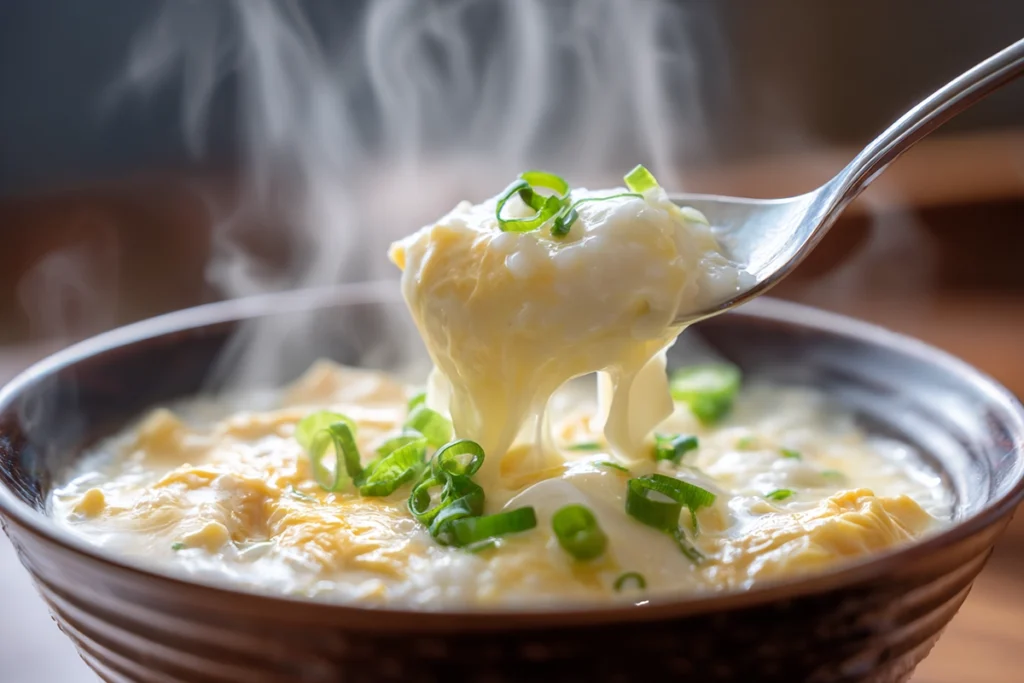
FAQ
What consistency should okayu be—thick or watery?
Okayu can range from thick to soupy. If you like it hearty, stick to a 1:5 rice-to-liquid ratio; if you prefer it more like broth, go up to 1:7 or more. Adjust with extra water or broth as you cook.
Can I use leftover cooked rice to make okayu?
Yes. The ire-kayu method starts with cooked rice added to hot liquid. It cuts down on cooking time while still creating a creamy porridge.
When should I add the egg so it doesn’t overcook?
Add the beaten egg at low heat near the end, stirring gently in one direction. That way it forms soft ribbons instead of turning into curds.
Is okayu the same as congee or porridge?
They’re similar in concept—rice slowly cooked in plenty of liquid. But okayu is typically more restrained in seasoning and lighter in taste than many congees.
Can I cook okayu with egg in a rice cooker or Instant Pot?
Yes, you can use a rice cooker on its porridge setting or an Instant Pot on “porridge.” Just take care to add the egg after the pressure cycle and stir gently so it doesn’t overcook.
What Are Our Readers Saying?
There are no reviews yet. Be the first one to write one.

